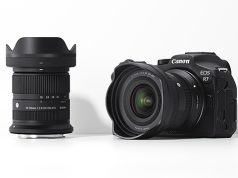What will the imaging retail store of the future look like? What types of products and services will it offer? And more importantly, what will retailers need to do to attract and keep customers to stay in business? According to Eugene Fram, a J. Warren McClure Research Professor of Marketing in RIT’s E. Philip Saunders College of Business, who keeps a close eye on trends in the marketplace, the best current example of a “futuristic” store is the Apple store in New York City (and throughout the country). “It uses the latest transaction technology, has able salespeople who ‘love’ (and actually have real knowledge of) the merchandise and the atmosphere is esthetically pleasing.”
“Apple does a very good job of not limiting itself to a traditional industry definition,” adds Victor Cheng, e-commerce expert and author of the book Extreme Revenue Growth: The Guide for Silicon Valley CEOs (www.victorcheng.com). According to Cheng, Apples’ breakthrough insight was realizing it wasn’t in the business of selling CDs and MP3 players, but instead that is was in the business of helping people enjoy portable music. “It’s what led them to create the whole iTune service,” Cheng states. “Because if you buy an MP3 Player, you still have to get in the car, drive to the store, buy the CD, come back, put it in your computer and put it on the player. It was a lot of work.” Hence, iTunes was born and the rest, as we know, is retail history.
“I think retailers in the imaging world need to think the same way. Their job is to make the capturing, recalling and sharing of memories better. And they either have to tie the whole process together like Apple did, end-to-end, or get really good at one (product/service) and go way beyond what a big box concept store or chain would do.”
Capture, Recall and Share
“The imaging retail store of the future will be shaped by a blurring of traditional boundaries,” continues Cheng. “It will be a blend of online/offline and a blend of selling product/on-going services. In short, if you think of yourself as a retailer with a store selling images, you will lose. As my former Kodak clients said, ‘We’re not in the film business. We’re not in the imaging business. We have come to realize we are in the memories business.’ (Retailers) have to think from the customers point of view, and the customer doesn’t really care if you have a store or not. They don’t care if you’re selling an image, images, an image service or image delivery, whether it’s online, a store or delivered via the mail. Customers really care about three things—they want to capture images, recall them and share them—and they are very flexible with whom they work with to do that.
“I think retailers are often less flexible than their customers are,” says Cheng. “For example, I have advanced photography skills but I use both a little point-and-shoot camera and a big digital SLR. I’ll order online and I’ll print in a store.” Different consumers have different habits, he notes. “But it’s really about capturing images, recalling them to enjoy yourself and sharing them with others.
“Most photography stores believe they’re in the business of selling cameras,” continues Cheng. “But from a consumer standpoint, all we care about is getting our pictures. We don’t really want to buy a camera; we just want the pictures the camera produces, so we tolerate having to deal with the thing called a camera. I think a lot of less skilled photographers, which is the majority of people, buy really nice cameras thinking it will produce really good shots. And when it doesn’t, they’re disappointed, and they wonder how come the camera can’t create the shots they want. The specialty retailer could solve that problem by saying we’re not really in the camera-selling business, we’re in the ‘help-you-take-better-pictures-business.’ And that could be classes, an ongoing membership program, a mentor program, etc.—it could be a radically different way (of selling photography) that a Walgreens or Wal-Mart can’t do.”
Future Success Strategies
Rob Eby, director of purchasing at D&H Distributing says, “There are some immediate strategies retailers can take to point them in the right direction for success in the future. The true all-in-one device is coming, so photo retailers who can be creative and stay ahead of the curve in stocking the right all-in-one multimedia will be better positioned to succeed.” For example, notes Eby, the Nokia N95 is now a 5 MP camera, a phone, a GPS device, and a music and video player all in one. “The camera that does more will sell more,” he says, “and the photo retailer will capture sales spurred by cross-over functions borrowed from other consumer electronics categories.
“Also,” continues Eby, “retailers should try to work storage products into their solutions. Storage has become the digital repository for life with many consumers. We’re already saying goodbye to media like 35mm film, videotape and even the standard CD format. Music, movies, digital stills, and even video surveillance cameras are all becoming digitally-based. This creates huge storage requirements for consumers that retailers can take advantage of as an add-on strategy. Taking that a step further, consumers will be looking for ways to safeguard all that storage material, like a safety deposit box.”
Eby also believes retailers should take a hands-on, educational role with consumers to develop their market. “Offer classes teaching people how to master image editing or video editing. Their new skills will justify their indulgence in the latest and greatest digital imaging technology, as opposed to being satisfied with their existing 5 megapixel camera.”
“I think the (retailers) that are around now have a great opportunity,” states Stewart Henderson, VP Marketing, Samsung. “People that have not kept up with the trends have been weeded out, so to speak, and right now it’s survival of the fittest.” Perhaps it’s time for retailers to start their own trends, says Henderson, who sites a retailer in Columbus, Ohio, that’s opened a coffee bar in his shop. “It’s a way to attract people. Customers are coming in, parking themselves in his camera store and purchasing product as they’re working on projects (such as scrapbooking). That’s kind of innovative as far as I’m concerned and I think that’s going to be key. (Retail stores) are going to have to be more than a destination. You have to attract people that want to come in, stay a while and then want to come back.”
Personal Service/Right Infrastructure
Since consumers can already purchase products and services from a variety of sources, how do retailers get customers to choose their store over someone else’s?
“Photo retailers 10 years from now are going to have to offer consumers something more personal than what they’re getting today,” states Rowan Lawson, WorldWide Kiosk director, Eastman Kodak. “And it’s going to be an experience that’s focused on a specific consumer, which means understanding more about consumers and knowing what they did last time they were in the store, etc. It’s really about having a personal level of service and systems to support that service. It’s going to be very experiential; a world that’s about each individual, not mass anything. Consumers will come back more and more to places that offer that kind of experience—more personal, fun, and social.
“There are photo retailers already doing that today, like 30 Minute Photo in Los Angeles,” notes Lawson. “That’s a company that’s already serving coffee and donuts when you walk in the door. It’s really about the experience and they’ve built a very successful business based on that.” However, Lawson believes personal service is only the tip of the iceberg. Retailers also have to have the right infrastructure in place, which includes connected systems. “Most importantly,” states Lawson, “they have to show consumers they can ‘live the dream’ starting right now.
“Living the dream is about being able to do more with pictures,” Lawson explains. “If you talk with consumers who’ve bought a digital camera in the last 5 years and ask them why they bought it, the first thing they’ll say is they want to share their pictures with friends and family. But they also say they want to create albums, etc. However, they think it isn’t easy to do. But with the right system it really is easy to do and that starts to engage them at a more experiential level.”
Typically, notes Lawson, consumers say they won’t try something until they’ve seen it. “It’s about demos and making sure the environment is clean and inviting and clearly signed. The minute you confuse consumers they resort to the lowest common denominator—the 4×6 prints that end up in a shoebox.”





